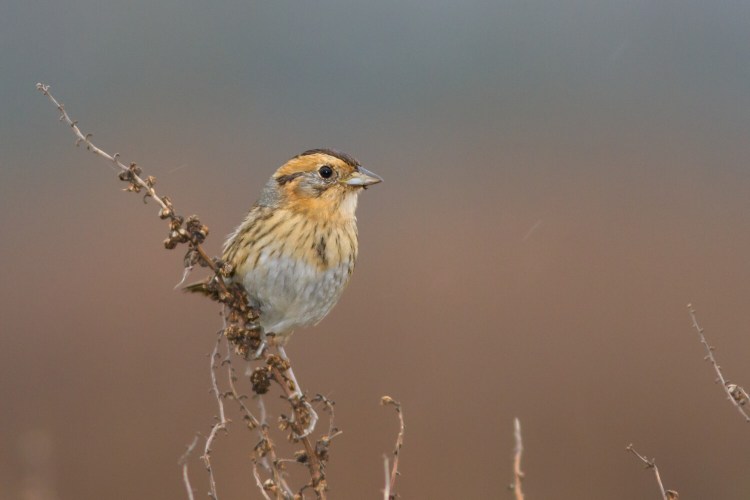Like all organisms, birds are well adapted to their environment. Birds have bills that are effective tools for gathering particular types of prey: sharp bills for tearing flesh in hawks and owls, forceps-like bills for capturing caterpillars in warblers, conical bills for crushing seeds in finches and sparrows. Bird toes and many other structures also are adapted for particular functions.
It’s fascinating to compare birds from different parts of the world and look for similar adaptations. For instance, our wood-warblers of the Americas are superficially similar to the Old World warblers of Africa and Eurasia. Both make a living by gleaning insect larvae from leaves using their fine bills. Yet DNA evidence indicates that these two families of birds are not closely related. Rather, each family developed thin bills independently, a process biologists call convergence.
Examples of convergence abound among the birds. For instance, the African longclaws look very similar to our meadowlarks but are only distantly related. Falcons and hawks were once combined into a single family. Thanks to DNA comparisons, we know the closest relatives of falcons are parrots and songbirds, while the closest relatives of hawks are New World vultures. These formidable predators with wicked talons, beaks for tearing and extraordinary eyesight arose independently.
In my last column, I wrote about the saltmarsh sparrow, the only songbird in North America that’s restricted to marine habitats. But there are some species of sparrows in which subspecies have invaded the marine environment.
A bird living in a marine environment faces serious salt-balance problems. The food they eat and any water they take in are high in salts, stressing the kidneys. Humans can’t drink seawater without dire consequences, and so it is with most birds. But birds living in salt marshes have developed physiological functions to ameliorate the salt stress and other challenges.
Jennifer Walsh of the Cornell Laboratory of Ornithology, along with 12 co-authors, recently completed a genetic study of four sparrow subspecies that occur in tidal marsh environments. They compared each tidal marsh sparrow to its closest relatives from upland areas, free of salinity stress.
The four tidal marsh sparrows included a subspecies of song sparrow found only in the salt marshes of San Francisco Bay; a subspecies of Savannah sparrow found in salt marshes from Santa Barbara, California, to the Baja Peninsula of Mexico; Nelson’s sparrow, found in salt marshes from Maine to the Maritime Provinces of Canada; and a subspecies of swamp sparrow found in brackish marshes along the mid-Atlantic coast.
The comparison group for the tidal Nelson’s sparrows was a population found in freshwater marshes in Minnesota and North Dakota. The closest relatives of the other species were within 100 miles or so of the tidal populations.
The four subspecies of tidal marsh sparrows share three adaptations for life in those areas. First are modifications of the kidneys to deal with the heavy salt load. Second, the bills of the tidal marsh birds are larger than the bills of their upland relatives. The larger bill allows more efficient heat loss in the relatively hot tidal habitats. Finally, all tidal marsh sparrows have darker plumage than upland populations, an adaptation to reflect the intense, harmful ultraviolet radiation in the coastal environments.
The question Walsh and colleagues were seeking to answer is whether these adaptations for living in a tidal environment developed independently in the four sparrow subspecies or represent shared adaptations controlled by the same genes that are not activated in upland sparrows.
To cut to the chase, the research showed that these three adaptations had mostly separate genetic origins. In other words, this suite of adaptations represents four examples of convergence to the same solutions for living in stressful tidal marshes.
Herb Wilson is an emeritus professor of biology at Colby College, where he taught ornithology and other biology courses. He welcomes reader comments and questions at whwilson@colby.edu
Send questions/comments to the editors.



Comments are no longer available on this story